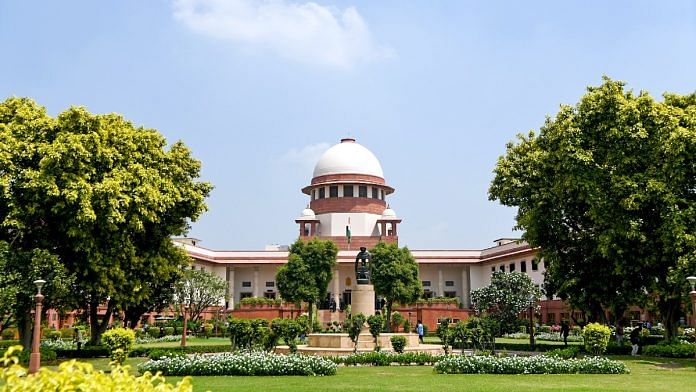We now turn to a very different story for why senior advocates have a clear advantage in getting their cases admitted to the Supreme Court. It goes like this—the Supreme Court hears tens of thousands of petitions per year. Even with more than thirty hard-working judges, this is a staggering amount of work. Unable to devote careful attention to each of these cases, the judges of the Supreme Court are desperate to find ways to admit or dismiss petitions as fast as possible. One way to manage the time crunch is to rely on what they do know—the lawyers in front of them. And no lawyers are more familiar to the Court, and more trusted by the Court, than senior advocates. Sometimes, in the span of a two-minute hearing, the judges can tell whether a petition has true merit or not, and they admit or dismiss accordingly. But often, they cannot tell. In those cases, they decide based on the advocate. It is easy to say, ‘dismissed’, to a stranger, but it is hard to turn away a familiar face, a celebrity or a respected elder.
Also Read: Modi doesn’t care about Parliament. He spent only 4 hours there in 2021 – Derek O’ Brien
An Overwhelmed Court Looking for Familiar Faces
We begin with the fact that the judges of the Supreme Court face a crushing case load. As we described in Chapter 1, the Court’s pursuit of being a ‘people’s court’ has led it to invite a massive flow of SLPs that it must sift through. The Court receives over 60,000 petitions per year. It devotes two days per week—Monday and Friday—to hearings on whether to admit or dismiss these petitions. And because it holds at least one hearing per petition, and sometimes more, before admitting or dismissing the petition, this means that on any given Monday or Friday, the Court holds around 1000 hearings.
The judges of the Supreme Court must somehow sort through this mountain of cases. To do this, it divides itself into benches of two judges to hear each petition, allowing it to hold many hearings in tandem throughout the day. And it holds incredibly compressed hearings. As we’ve noted, most hearings on SLPs last one minute and thirty-three seconds or less. In other words, in a typical case, the judges hear the law, facts and arguments relevant to the case for less than 100 seconds before they make their decision.
Yet, as our data shows, the initial hearing for an SLP is the most crucial hearing for a case seeking relief in the Supreme Court. A petition that makes it past this first step is nearly guaranteed a full hearing by the Court and a chance at winning the case in a final judgment. How can judges make such a momentous decision after a hearing that lasts less than two minutes?
The answer, of course, is that two minutes is simply not enough time to have an adequate hearing of the relevant facts, legal issues, case history and arguments by the petitioner. Yet every Monday and Friday, the Supreme Court makes admissions decisions on hundreds of cases on the basis of less than two minutes of hearing time. With so little time per case, the Supreme Court must make snap decisions, and one piece of information that it always has when making that decision is the identity of the lawyer making the argument.
Given these facts, it should be no surprise that senior advocates are so valuable to the Supreme Court. They represent familiarity, trust, experience and knowledge in a setting where hard facts, legal details and time are in short supply. A senior advocate arguing before two Supreme Court judges at an admissions hearing is likely going to have more experience in the Supreme Court than both of the judges combined. From day one on the Supreme Court until retirement day, a Supreme Court judge will see the same senior advocates again and again. Even if the bias is unconscious, it would only be natural for a judge to defer to a familiar face who has much more experience than the judge has.
This deference is natural, but it is also a problem. The senior advocate has credibility due to experience and expertise but isn’t likely giving an objective assessment of the worthiness of the petition. The senior advocate is an advocate, who is highly paid to obtain a specific result from the Court. Further, the initial admissions hearing is not a balanced hearing, where both sides are heard. Usually, only the counsel for the petitioner is present.
Further, the power of the senior advocate is not available to all. With rates exceeding Rs 15 lakh for the most prominent senior advocates, this power is available only to the very rich. To be sure, many senior advocates offer their services at reduced rates or even free as a pro bono service to clients who are less wealthy, but this charity is exercised at the discretion of the senior advocate. In other words, the decision of who gains access to the Supreme Court is once again in the hands of the senior advocate.
 This excerpt from Court on Trial: A Data-Driven Account of the Supreme Court of India’ by Aparna Chandra, Sital Kalantry and William HJ Hubbard has been published with permission from Penguin India.
This excerpt from Court on Trial: A Data-Driven Account of the Supreme Court of India’ by Aparna Chandra, Sital Kalantry and William HJ Hubbard has been published with permission from Penguin India.



